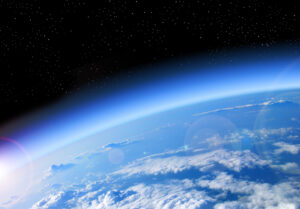The Science of Pressure

Pressure, an essential concept in physics, permeates various aspects of our daily lives, from the air we breathe to the fluids coursing through our bodies. This exploration delves into the intricacies of pressure, examining its definition, measurement, applications, and the fundamental principles that govern its behavior.
Definition of Pressure:
Fundamental Concept: Pressure, in the context of physics, is defined as the force exerted per unit area. It is a scalar quantity, meaning it has magnitude but no specific direction.
Atmospheric Pressure: Atmospheric pressure is the force exerted by the Earth’s atmosphere on any object within it. At sea level, atmospheric pressure is approximately 101.3 kilopascals (kPa) or 14.7 pounds per square inch (psi).
Units of Pressure:
Pascal (Pa): The SI unit of pressure is the pascal, defined as one newton per square meter. It is named after Blaise Pascal, a French mathematician and physicist.
Other Units: Pressure can also be measured in other units, such as atmospheres (atm), millimeters of mercury (mmHg), and pounds per square inch (psi), depending on the context.
Principles of Pressure:
Pascal’s Principle: Pascal’s principle states that a change in pressure applied to an enclosed fluid is transmitted undiminished to all portions of the fluid and to the walls of its container. This principle underlies the operation of hydraulic systems.
Boyle’s Law: Boyle’s law describes the relationship between the pressure and volume of a gas at constant temperature. It states that the pressure of a given amount of gas is inversely proportional to its volume.
Bernoulli’s Principle: Bernoulli’s principle relates the pressure within a fluid to its speed. It states that as the speed of a fluid increases, its pressure decreases, and vice versa. Understanding how aircraft wings produce lift requires an understanding of this principle.
Applications of pressure:
Atmospheric Pressure and Altitude: Atmospheric pressure decreases with increasing altitude. This phenomenon is evident in activities like high-altitude mountaineering, where lower atmospheric pressure affects both the human body and cooking processes.
Hydraulic Systems: Pascal’s principle is the foundation of hydraulic systems, where the application of pressure at one point in a fluid is transmitted to other points. Hydraulic systems are widely used in heavy machinery, brakes in vehicles, and industrial equipment.
Blood pressure: In the context of the human body, blood pressure is the force that blood applies to the walls of the arteries. It is crucial for circulation, and variations in blood pressure can have significant health implications.
Atmospheric Pressure in Weather Systems: Changes in atmospheric pressure are associated with weather patterns. High-pressure systems are generally associated with clear skies, while low-pressure systems often bring clouds and precipitation.
Measuring Pressure:
Barometer: A barometer is an instrument used to measure atmospheric pressure. The mercury barometer, invented by Torricelli, consists of a glass tube filled with mercury inverted in a dish of mercury. The height of the mercury column indicates atmospheric pressure.
Manometer: A manometer is a device used to measure the pressure of a gas or liquid. It typically consists of a U-shaped tube filled with a liquid, and the difference in height between the two arms corresponds to the pressure.
Challenges and Considerations:
Pressure and Human Health: Changes in atmospheric pressure, such as those experienced during air travel or in high-altitude environments, can affect the human body. Understanding these changes is crucial for addressing health concerns like altitude sickness.
Pressure in Engineering: Engineers must carefully consider pressure in the design and operation of various systems, from pipelines and hydraulic machinery to pressure vessels. Failure to account for pressure variations can lead to structural damage or system malfunction.
Technological Advancements:
Pressure Sensors: Technological advancements have led to the development of highly sensitive pressure sensors used in diverse applications. These sensors play a crucial role in automotive systems, medical devices, and environmental monitoring.
Atmospheric Pressure Models: Sophisticated models and simulations incorporate atmospheric pressure data to improve weather forecasting. Understanding atmospheric pressure variations aids in predicting storms, hurricanes, and other weather events.
Pressure is a fundamental concept with far-reaching implications in physics, engineering, and the natural world. From the air we breathe to the technologies that shape our lives, pressure influences diverse aspects of our existence.
A nuanced understanding of pressure, its principles, and its applications is not only essential for scientific inquiry but also for addressing practical challenges and driving technological innovations that propel us into the future.



